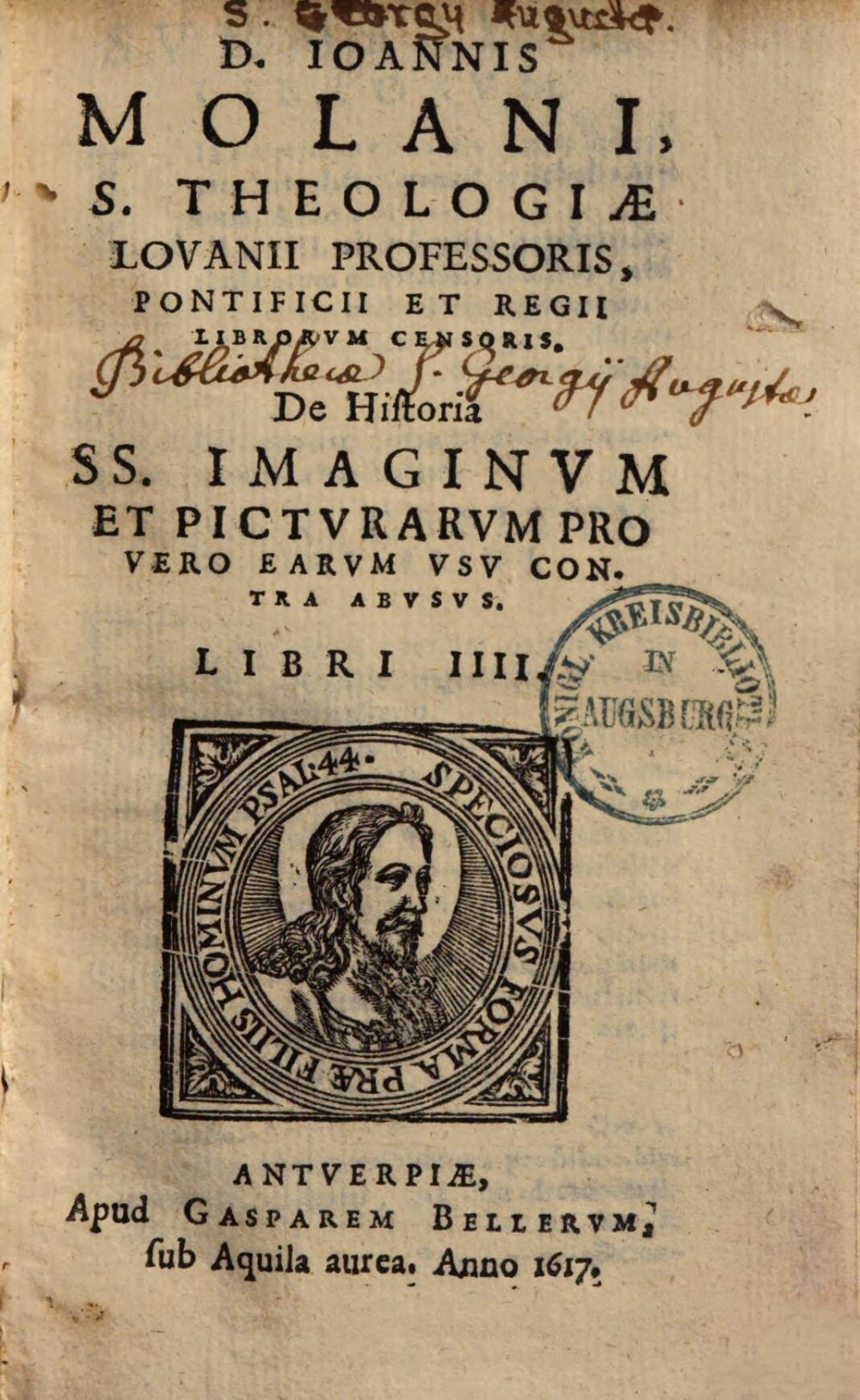
Augsburg, Staats- und Stadtbibliothek — Th H 1475. Digital Reproduction: München, Bayerische Staatsbibliothek, 2015.
In book 2, chapter 27, Molanus discusses images of the Virgin Mary that contain an error but do not pose a real danger. The chapter thus fits in the greater scheme created by the author in the work in which he categorises images and the errors they contain and whether these are to be condemned or not and according to what or whom. An important source for his judgement is the judgement of the Council of Trent, as in several instances of the chapter Molanus creates a relation between the text from the Council of Trent and the meaning of this specific motif.
The first case presented in this chapter is a recurrent image of the Virgin Mary in pain during labour while the midwives prepare a herbal potion for her. This story would derive from apocryphal sources and goes against the dogmas of the Church because Mary gave birth to Christ without any pain or the help of midwives. Interesting to note is the doubt that arises in his statement, it seems almost as if while writing Molanus comes to a different conclusion, namely that this depiction is dangerous.
“But at the moment I desire to pass on images which contain an error, but without danger, the painting of the blessed Mother of God in bed during labour, which embarrasses me. Actually, the more I look at her, the closer it seems to me to the portrayal of a dangerous mistake: The Virgin blemishes under pain and the midwives prepare a herbal tea for the delivering mother. How does this relate to the fact that the Virgin Mary, the mother of God, put her blessed son into the world while she was spared all the pains of childbirth? Regarding the midwives, one has to look for them in the apocryphal writings on the infancy of the Saviour. Jerome said: ‘No midwife, no solicitude from women to assist her; the mother was her own midwife. She wrapped the child in a blanket, as the Evangelist says, and placed him in the crypt.'”
“Sed dum transire cupio ad eas imagines quae errorem quidem continent sed non periculosum, impedior nonnihil per picturam beatissimae Deiparae in puerperio decumbentis. Dum enim eam exactius intueor, parum distare videtur à periculosi erroris Imaginibus. Pallet e doloribus Virgo, sortbitiunculam puerperae parant obstetrices. Ad quid ista? Cum deipara Virgo Maria, sicut sine dolore benedictum suum filium peperit, ita nullos ex partu dolores reservaverit. Et quod ad obstetrices attinet, quae ex apocrypho libro, de infantia Salvatoris, desumptae sunt, Nulla, ait Hieronymus obsterrix, nulla muliercularum sedulitas intercessit: ipsa et mater et obstetrix fuit. Pannis (inquit Evangelista) involuit infantem, et collocavit eum in praesepio. Quare docti etiam viri vehementer hanc improbant picturam. Inter quos Ambrosius Catharinus et Henricus Luitenius.”
Molanus 1996, 196-197.



